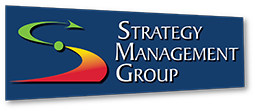View the replay! Strategy Essentials for Project Managers

Strategic Planning in the Healthcare Industry
 Over the last 10 years we have seen a tremendous change in the healthcare industry. Whether it is a shift in philosophy to focus on more value-based care or navigating the impact of implementing the Affordable Care Act here in the United States, significant shifts and changes have occurred and are occurring every day. Given the relative unpredictability of how the healthcare market will change, is there really any use for those in the industry to go through a strategic planning initiative? The answer is of course yes, but the real question is “how?”
Over the last 10 years we have seen a tremendous change in the healthcare industry. Whether it is a shift in philosophy to focus on more value-based care or navigating the impact of implementing the Affordable Care Act here in the United States, significant shifts and changes have occurred and are occurring every day. Given the relative unpredictability of how the healthcare market will change, is there really any use for those in the industry to go through a strategic planning initiative? The answer is of course yes, but the real question is “how?”
To be successful in the future, no matter how turbulent the path forward may be, organizations need to create a vision based on the best future assumptions they can identify. With any strategic planning effort is it really important to have at its foundation key assumptions about how the world will be different. Organizations then can describe what they need to look like given those future assumptions, and then design a strategy to help them bridge the gap between where they are today and achieving that future success. But if all our assumptions of the future are up in the air, then how can we really build a strategy effectively?
I would argue that in industries that are experiencing a lot of change it is even more important to be strategic! Yes, there are many unknowns given the relative volatility of the US political landscape as it pertains to healthcare. But there are some key assumptions that can be made that are relative certainties regardless of any potential future political or regulatory shifts? If we can identify those “most probable” assumptions in the healthcare industry or in our particular marketplace, then it would be worth our time to identify them and begin building our response strategies accordingly. I would like to present the follow set of ideas as examples of assumptions that most participants in the healthcare sector need to consider over the next five years and could be the basis for strategic discussion. These are not meant to be all inclusive, but merely to demonstrate that there are fundamental assumptions that can be identified even in a marketplace where significant uncertainty exists.
The need to provide ever increasing quality patient care will continue. The focus over the next five years will continue to be on delivering highly impactful, cost-effective healthcare. Whether it is driven by key stakeholder requirements or customer expectations, we know that successful players in the healthcare industry will be those that can generate healthy outcomes for their patients. Fundamentally having strategies built around improved effectiveness and efficiency in delivering quality patient care will be a fundamental requirement in the future. No real surprises but any strategic discussion in the healthcare sector must begin with patient care! The point is that the ability to differentiate regarding healthcare outcomes will be the bases for any future success in the industry.
Changing in customer volume and demographics will continue. The fact is that the US population is going to continue to grow over the next five years. In May of 2017, the US passed the 325 million mark and is expected to be over 332 million by 2020 (US Census data). That means essentially there will be more people needing care in the future with some healthcare markets seeing fairly dramatic increases in patient populations. We have seen a significant impact in demographic shifts in the US over the last five years and this trend will continue over the next five years as the increases in Hispanic and Asian demographic groups continues at a high rate. How will these assumptions impact capacity requirements or service delivery requirements within the healthcare sector?
Labor supply changes. The US has seen labor supply grow by 2.6 percent per year over the last decade, but that trend will not continue. Rand researchers (Karoly & Panis, 2004) have postulated that the growth of labor supply will only be around .04 percent over the next decade and will be even smaller the following decade. Also, while the trend has been a more aging workforce over the last 20 years this will also change with the workforce being more evenly balanced across age groups in the future. How will this impact the availability of skill workers and experience levels in the healthcare industry? What does this mean for how we need to recruit and retain of workforce?
Continued increase on wellness and prevention. Significant increase in innovation with regard to nutrition for example will be driven by increase consumer demand for wellness. Patients are sharing that they want advice on weight management and diet therapies (PwC Health Research Institute, 2016) for example leading to increased focus on these services within the industry. Smoking cessation and fitness programs are other programs that are already tied to health outcomes and will continue to be important in the future. How will this trend impact the future services healthcare practitioners will provide? Or the information they make available to their patients?
Emerging technologies in the healthcare marketplace. PWC reports that “the US health industry lags behind other industries, such as retail and telecommunications, in deploying emerging technologies, including artificial intelligence, drones and virtual reality but that this trend is about to change.” (PwC Health Research Institute, 2016). Accenture reports that “the global healthcare industry in the year 2020 will be a highly connected environment powered by large data networks, cloud computing, and mobile devices. There will be widespread increases in the number of connected healthcare networks providing seamless integration between care providers, patients, pharmaceutical companies, health insurers, and other invested parties anywhere in the world. Care within this model will become more patient-centric, less expensive to provide, and more innovative.” (Meissner, 2013). These assumptions would call for a need to invest in breakthrough technologies that impact how patient care is provided and operational business processes are managed moving forward. This will also impact the types of skills needed in the future within the industry.
Rising operating costs driven by government regulations and expanded capacity requirements will impact the financial viability of healthcare systems (Jonash & Ronanki, 2015). Healthcare CEO’s and COO’s must find innovative was to drive revenue and decrease costs. How will rising costs impact the future viability of healthcare providers? How must they change how they do business? In what areas must they innovate to reduce costs?
I share these discussion points as merely a sampling of assumptions that could be discussed by healthcare industry players in formulating their 3-5-year strategies. With proper research conducted, there are dozens of additional assumptions that we could discuss to really understand the future of the healthcare industry. I provide these few ideas as evidence that even in an industry that is experiencing rapid, constant change, there is a need to really understand how the world will be different in the future. To do so, we must first understand what assumptions can be made and set out to use a strategic planning framework to understand how our healthcare organization must transform in the future in the face of those assumptions. Once we are able to articulate that future successful state, we can then work to understand what must be accomplished to get from where we are today to achieving the needed transformation that must take place in the next few years – our strategy becomes the path and the plan to future success.
Sources:
Jonash, Ben & Rajeev Ronanki (2015). The convergence of health care trends: Innovation strategies for emerging opportunities. Retrieved from: https://www2.deloitte.com/us/en/pages/life-sciences-and-health-care/articles/convergence-health-care-trends.html?id=us::3bi:confidence:eng:cons::::qQmDoWY2::77378163007585:bb:::nb
Karoly, Lynn A. and Constantijn (Stan) Panis (2004). The Future at Work: Trends and Implications. Retrieved from: https://www.rand.org/pubs/research_briefs/RB5070.html
Meissner, Armin (2013). The Global Healthcare Industry in the Year 2020. Retrieved from: https://www.mddionline.com/global-healthcare-industry-year-2020.
PwC Health Research Institute (2016). Top health industry issues of 2017: A year of uncertainty and opportunity. Retrieved from: https://www.pwc.com/us/en/health-industries/pdf/pwc-hri-top-healthcare-issues-2017.pdf
U.S. Census Bureau (n.d.). Retrieved from: https://www.census.gov/2020census

How to Keep Lettuce Crunchy and Other Strategy Execution Lessons
I learned two lessons in college that I still think about – one in the kitchen and one as a strategy execution consultant. My professor claimed during a cell biology lesson that if you leave iceberg lettuce in water for about 20 minutes its cells expand as they soak up the water. He said that many chefs knew that soaking lettuce in cold water made it seem fresher and crunchier but few understood that it was because the cells were packed to the bursting point.
I went home for the holidays eager to share this new lesson with my mother. This is where I learned the consulting lesson.
My mother had been taught that in order to keep salad crisp, you should throw a slice of bread into the salad as you are making it and then pull the bread out just before serving. The thinking was that the bread soaked up the excess moisture that would otherwise lead to wilting.
When I shared my professor’s theory with her, I assumed that we would immediately begin saving a nickel per month due to all that saved bread. Instead I was surprised to find that my mother was not about to change the way she made salad because of something her son’s biology professor said, not even after I showed her that the lettuce didn’t wilt.
Strategy execution is about transformation. It is about the systematic implementation of the changes needed to move an organization forward. Unfortunately, as you try to convince people to change the way they do things, many of them react exactly like my mother did.
The change management field is built around several general principles in how to manage people through change: thoroughly communicate how/why/what change is happening, look for the “what’s-in-it-for-me” for employees, communicate using two-way dialog, remove barriers to change, celebrate success, describe a “burning platform”, etc. Strategy execution specialists bring a few more key approaches to these basic doctrines.
Engage Around the Big Picture. A simple business case (e.g. this initiative will help us improve process efficiency and lower operating costs) often isn’t enough. To embrace change it helps to understand how a particular initiative is aligned with the overall strategy of the organization (e.g. we want to bring low cost healthcare solutions to those suffering from an ailment. If we can improve this process, the solution could be better, more consistent, and cheaper than anyone else in the market). Employees will be far more motivated to change if they believe in the strategy. Strategy professionals typically have the skills needed to articulate and communicate that story.
Make Strategy Everyone’s Job. Strategy is a team sport. Too many strategy professionals think that because they are good at it they should do all of the work themselves. But good strategy execution relies on others to implement. I can tell my mother that this is a better way or (if she were an employee) order her to follow a new process, but as long as she can dismiss the idea as an outsider’s, change will be painful. Good strategy execution professionals understand that their job is to facilitate a consensus around a shared vision rather than simply dream up a vision in a vacuum.
Pick Your Battles. Strategy is about focus and strategic thinkers should be good at prioritizing. The worst thing you can do is overwhelm employees with dozens of major changes at the same time and then when things go badly decide that it’s not worth the trouble. Better is to pick the most important changes and implement them at a pace that the organization can handle. Then think through and communicate the timeline, action steps, and resource changes that will happen as the change is rolled out.
Facilitate a Sense of Inevitability. The weakest client outcomes in my career happened when there was uncertainty about whether or not the senior-most executives were on board. A well-meaning strategic planning director that isn’t visibly supported by the executive team will struggle to move an organization forward even if they do everything else right. On the other hand, if the executive team has thoroughly and repeatedly communicated that this change is going to happen with or without you, the inertia of inevitability will convince people to jump on the bandwagon even if other change management mistakes are made.

Identify Strategic Thinking with One Simple Question
I used to work on a research team for a company that produced an operational risk software product. I always found it interesting how different members of the same team answered an important question: what do you do?
Here is the way Person A and Person B responded:
Person A: We do research on the internet and enter data points into an operational risk database.
Person B: We help banks understand operational risk and how much related capital they were required to reserve by providing an analytical software solution that models operational risk in the global market.
Technically both answers were correct. For the data model to be statistically significant, the product needed a certain number of data points, and our research team’s job was to research and categorize examples of operational loss in order to populate the database and make the model work. And yet, somehow Person A’s answer was always unsatisfying for some people.
It might be tempting to say that Person B was simply exaggerating the importance of their work by describing it in terms of the mission of the product line, but I think that misses an important point about the value of thinking strategically no matter what your position with the organization is. Person A was simply describing our job. Person B was describing how we created value. Different ways of describing our work was actually a window into the strategic thinking style of the team members.
From Daniel Pink to Simon Sinek and others, much has been said and written about how people are more motivated and productive when they understand the larger context for their work. Understanding why they are doing the work is profoundly important for creative professionals to feel a sense of engagement. Helping employees transition from narrowly thinking about what they do to more broadly thinking about what they are trying to accomplish can improve organizational performance in a number of ways.
The good news is that strategic thinking is a teachable skill. In our BSC Certification courses, we begin by teaching the basic semantics of strategy. At first, students mechanically append or replace the “task” language that most are comfortable with (we need to develop a new service by milestone x) with language that reflects a higher level objective (we want to improve the customer experience; the development of a new services is one option for accomplishing that). Over time, mechanical semantics evolve into an instinct for intuitively thinking about the strategic context. As students change the way they think about strategy and action, critical thinking skills improve as well (e.g. if we are trying to improve the customer experience, is a new service really the best way to do it?). The transition for many teams from always focusing on tactics and actions to always starting with the big picture and working down can be quite profound.
For more about how to improve strategic thinking in your organization, see our Balanced Scorecard Certification Program or The Institute Way: Simplify Strategic Planning and Management with the Balanced Scorecard.

